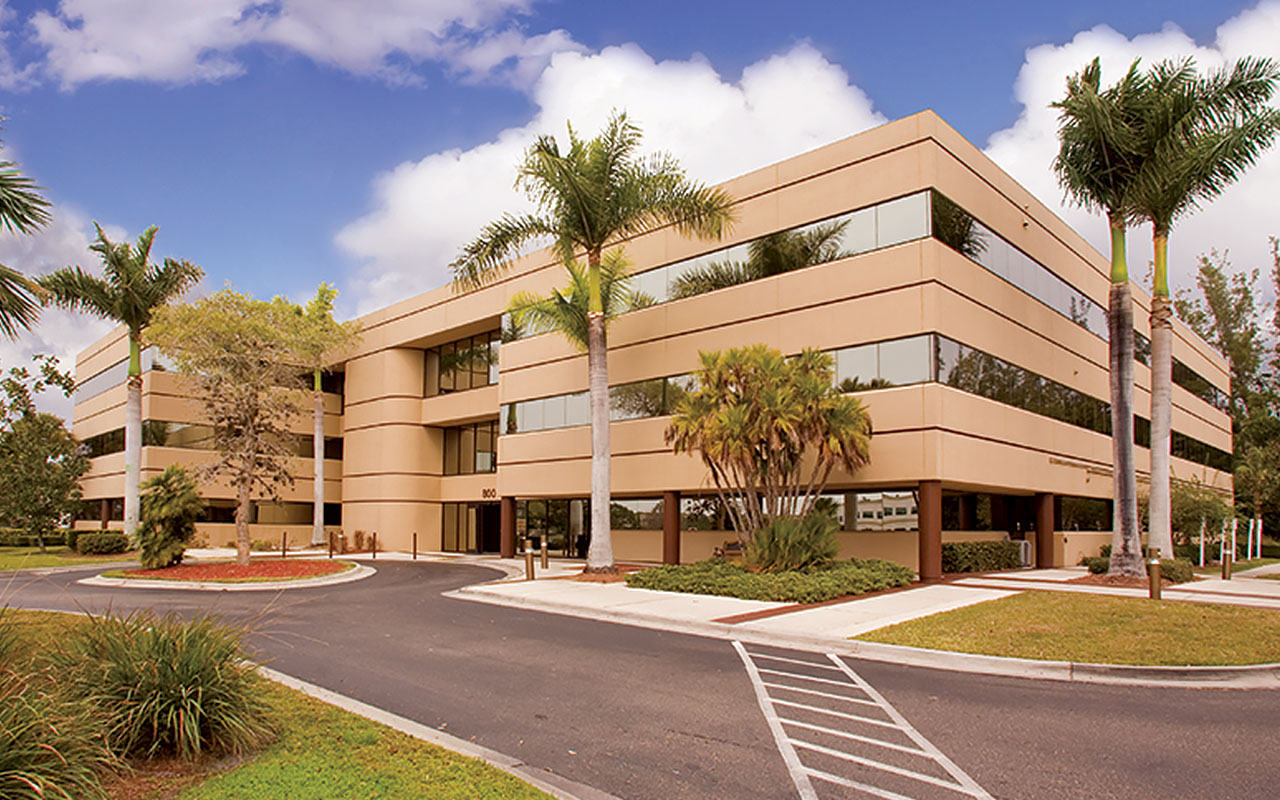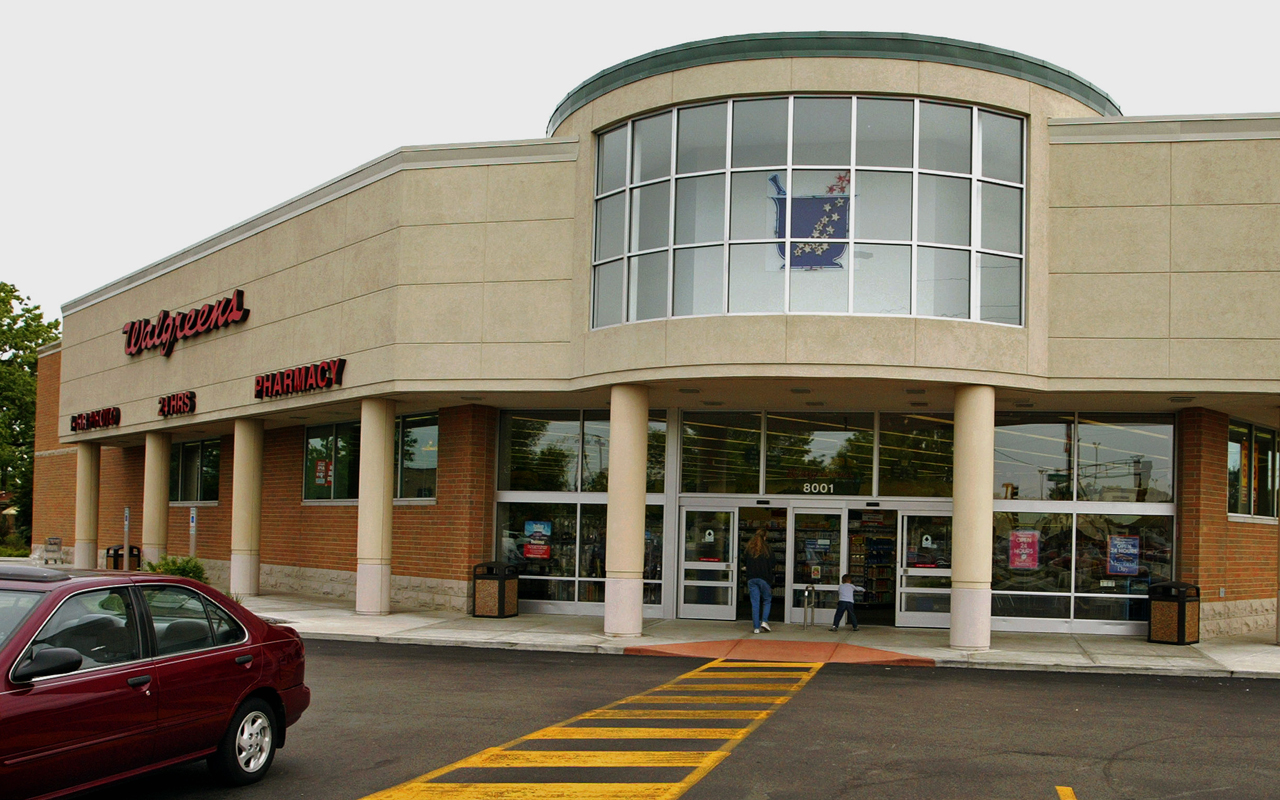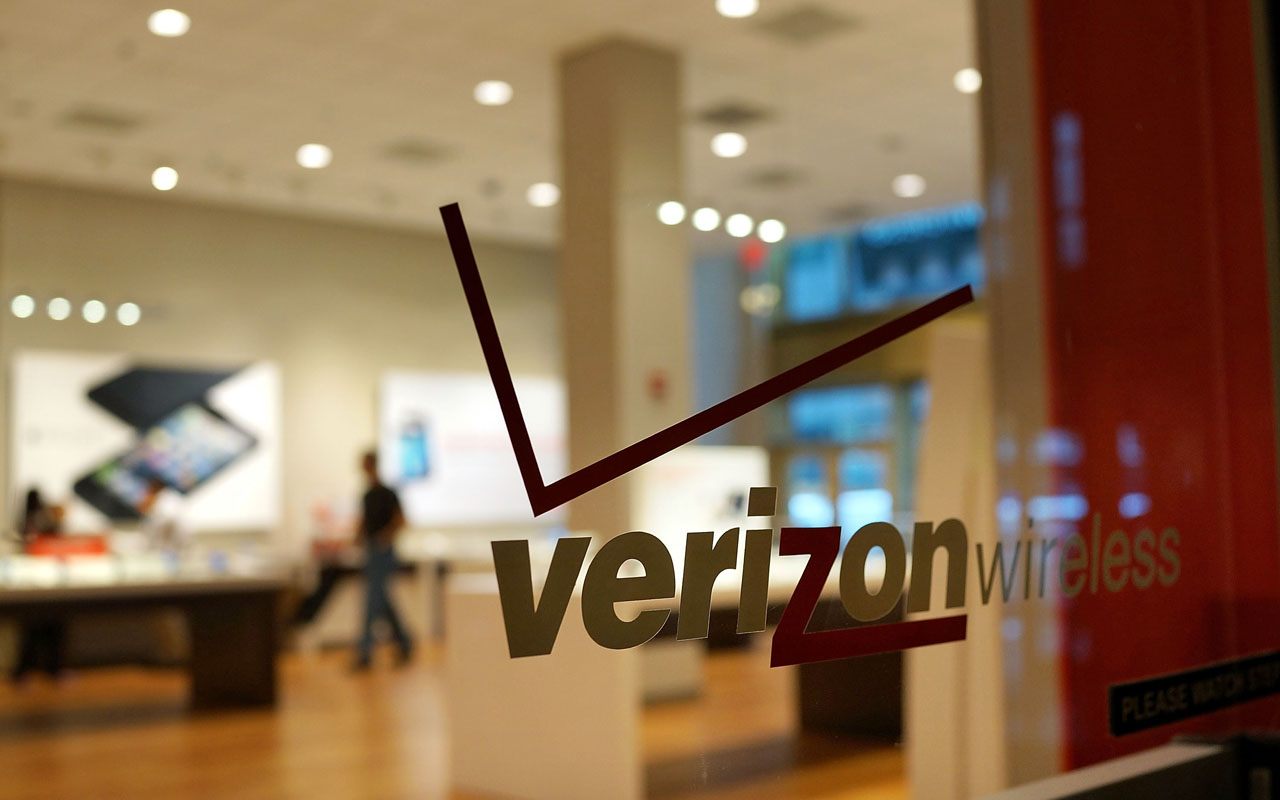19 Best Retirement Stocks to Buy in 2019
Generating safe, regular income and preserving capital are two primary objectives in retirement.


Generating safe, regular income and preserving capital are two primary objectives in retirement. The best retirement stocks to buy, then – whether you’re buying in 2019 or any other year – must be quality dividend payers that can help meet both of those goals in the long-term.
Unlike many fixed-income investments, numerous dividend stocks offer relatively high yields, grow their payouts each year and appreciate in price over time as their businesses generate more profits and become more valuable.
Not all dividends are safe, however. From General Electric (GE) and Owens & Minor (OMI) to L Brands (LB) and Buckeye Partners LP (BPL), several high-profile dividend-payers slashed their payouts in 2018, sending their stock prices tumbling. So the dividend stocks you depend on must be chosen with care.
These are the 19 best retirement stocks to buy for 2019. Research firm Simply Safe Dividends developed a Dividend Safety Score system that has helped investors avoid more than 98% of dividend cuts, including each of those companies listed above. The 19 stocks on this list have solid Dividend Safety Scores and generous yields near 4% or higher, making them appealing retirement stocks for income. Importantly, they also have strong potential to maintain and grow their dividends in all manner of economic and market environments.
Data is as of Dec. 16, 2018. Dividend yields are calculated by annualizing the most recent quarterly payout and dividing by the share price. Companies are listed in alphabetical order.

Brookfield Infrastructure Partners LP
- Market value: $10.4 billion
- Distribution yield: 5.0%*
- Distribution growth streak: 10 years
- Brookfield Infrastructure Partners LP (BIP, $37.50) is a master limited partnership (MLP) that owns a diverse array of long-life assets, including electrical transmission lines, toll roads, rail lines, midstream infrastructure and wireless towers. And these difficult-to-replicate assets collectively generate very predictable cash flow. In fact, 95% of the firm’s adjusted EBITDA is generated by regulated or long-term contracts.
As a result, Brookfield Infrastructure Partners has been able to predictably increase its distribution every year since going public in 2008. Going forward, management continues targeting a conservative payout of 60% to 70% of funds from operations and expects to generate 5% to 9% annual distribution growth.
This MLP sports an investment-grade credit rating, more than $2 billion in liquidity and numerous opportunities for growth as countries around the globe continue building, expanding and upgrading their infrastructure. All this should keep the partnership’s payout on solid ground.
It’s also worth noting the partnership structures its activities to avoid generating unrelated business taxable income. Therefore, unlike most limited partnerships that can have more complicated taxes, Brookfield’s units (shares of ownership in an MLP) are suitable for owning in retirement accounts.
As a Canadian company, Brookfield Infrastructure Partners will withhold 15% of its distribution to U.S. investors. But due to a tax treaty with Canada, U.S. investors can deduct this amount dollar-for-dollar as part of the foreign withholding tax credit.
* Distribution yields are calculated by annualizing the most recent distribution and dividing by the share price. Distributions are similar to dividends but are treated as tax-deferred returns of capital and require different paperwork come tax time.

Crown Castle International
- Market value: $47.5 billion
- Dividend yield: 3.9%
- Dividend growth streak: 4 years
- Crown Castle International (CCI, $114.55), which has more than 40,000 telecom towers and over 65,000 miles of fiber supporting its small cell network, is the largest provider of wireless infrastructure in America. It also is a holding in Bill Gates’ dividend portfolio.
The real estate investment trust (REIT) makes money by leasing out its towers and small cell nodes to wireless service providers such as AT&T (T) and Sprint (S). These carriers then deploy their equipment on the towers to power their wireless services used by consumers and businesses.
Crown Castle’s business model is appealing to conservative investors in part because it is so predictable. Most of the firm’s revenue is recurring and under long-term contracts with embedded growth from escalators.
Cisco Systems (CSCO) expects mobile data usage to more than quadruple between 2016 and 2021, so carrier network investment seems very likely to continue growing as well. As this plays out, Crown Castle’s towers and small cell networks should enjoy ever-higher utilization rates, supporting the firm’s outlook for profitable growth.
Besides its low-risk business model, CCI is one of the best retirement stocks due to its conservative management. The company maintains an investment-grade balance sheet and has an adjusted funds from operations (FFO, an important measure of REIT profitability) payout ratio just below 80%, which is very healthy.
Crown Castle has grown its dividend each since converting to a REIT in 2014, and management expects 7% to 8% annual dividend growth to continue over the long-term. For retired investors seeking a blend of income and growth, Crown Castle is a stock to consider.

Duke Energy
- Market value: $64.7 billion
- Dividend yield: 4.1%
- Dividend growth streak: 14 years
Thanks to their predictable earnings, generous dividend payments, and defensive business models, regulated utilities are a cornerstone of many retirement portfolios. They also account for many of the best recession-proof stocks highlighted by Simply Safe Dividends.
- Duke Energy (DUK, $90.75) is no exception. The regulated utility serves 7.6 million electric customers and 1.6 million gas customers spread across the American Midwest and Southeast. Importantly, the areas Duke Energy operates in are favorable from both regulatory and economic standpoints.
“Duke’s regulatory environment stands out among its peers and is supported by better-than-average economic fundamentals in its key regions,” writes Morningstar senior equity analyst Andrew Bischof, CFA, CPA. “These factors contribute to the premium returns Duke has earned and have led to a constructive working relationship with its regulators, the most critical component of a regulated utility’s moat.”
Thanks to these qualities, Duke Energy can profitably grow its operations with little risk. Management is in the middle of executing a $37 billion growth capital plan between 2018 and 2022 that is expected to generate 4% to 6% annual earnings expansion.
If successful, Duke Energy’s dividend should grow at a similar rate and should remain on solid ground thanks to an expected 70% to 75% payout ratio and solid investment-grade credit rating. The utility has paid dividends for 92 consecutive years, and that track record shows no signs of stopping anytime soon.

Enterprise Products Partners LP
- Market value: $49.1 billion
- Distribution yield: 6.6%
- Distribution growth streak: 20 years
MLPs have had a rough couple of years. A handful of factors – including crashing oil prices, regulatory pressure and tax headwinds – have not only pressured unit prices, but also forced distribution cuts and major restructurings.
- Enterprise Products Partners LP (EPD, $22.51) has not only held its ground during this tumultuous time, but the firm has also continued its 20-year distribution growth streak.
Enterprise is one of the largest midstream energy companies with around 50,000 miles of pipelines and has long been conservatively managed. For example, the firm eliminated its incentive distribution rights in 2002, has one of the highest credit ratings (BBB+) in the midstream energy sector and has maintained an excellent distribution coverage ratio of 1.6x through the first nine months of 2018.
Importantly, Enterprise Products Partners also is transitioning to a traditional, more conservative financial model. Rather than depend on fickle investor sentiment by issuing new units to raise growth capital, the firm plans to self-fund the equity portion of its capital investments beginning in 2019. This will be made possible by retaining more cash flow and running the business with lower target leverage.
Overall, Enterprise Products Partners appears to be evolving into an even more conservative business. For income investors who are willing to accept some of the complexities that come with investing in MLPs, EPD is one of the more reliable bets.

Exxon Mobil
- Market value: $320.0 billion
- Dividend yield: 4.3%
- Dividend growth streak: 36 years
- Exxon Mobil (XOM, $75.58) is among the most popular among investors living off dividends in retirement, and for good reason.
Exxon is a fully integrated energy major, which means it operates globally along the entire hydrocarbon value chain. Argus analyst Bill Selesky writes that as a result, the giant energy producer, refiner and chemical business benefits from its diverse asset base and continues offering a sustainable dividend, despite the volatile oil price environment.
Allen Good, CFA, an analyst at Morningstar, similarly believes that Exxon is the highest-quality integrated firm, as evidenced by its superior returns made possible from the integration of low-cost assets and its low cost of capital (AA+ credit rating from S&P).
Simply put, XOM is among the most resilient and conservative businesses in the energy sector, which has helped it pay dividends for more than a century while increasing its payout for 36 consecutive years.
While many integrated oil firms are pulling back on growth in today’s volatile energy environment, Exxon’s management plans to invest approximately $200 billion between 2018 and 2025 to potentially more than double its operating cash flow. Even if oil prices average $40 per barrel, cash flow still is expected to rise 50% from these investments.
Management’s plans to ramp up capital expenditures are ambitious, but Exxon deserves the benefit of the doubt due to its excellent capital allocation track record and financial conservatism. The company’s dividend should remain safe, and its growth potential could improve if everything goes well.

Flowers Foods
- Market value: $4.0 billion
- Dividend yield: 3.8%
- Dividend growth streak: 16 years
- Flowers Foods (FLO, $19.04), which was founded in 1919, is a dominant player in the baked goods industry, with products spanning fresh breads, buns, snack cakes and rolls. Some of the company’s core brands include Nature’s Own (No. 1 load bread brand), Wonder Bread (98% consumer awareness), and Dave’s Killer Bread (No. 1 organic bread).
The fresh bakery market is very large and mature. As people continue eating in all manner of economic environments, it is also a recession-resistant industry. In fact, Flowers sales dipped just 2.6% during the financial crisis, and its stock lost just 1% while the Standard & Poor’s 500-stock lost 57% between 2007 and 2009.
FLO also continued raising its dividend during this time – something it has done for 16 consecutive years. While Flowers will never be a fast-growing business, it should remain a reliable cash cow for years to come. With an investment-grade credit rating and a payout ratio below 80%, management is running the business in a manner that should ensure safe dividends as well.

Healthcare Trust of America
- Market value: $5.6 billion
- Dividend yield: 4.5%
- Dividend growth streak: 5 years
- Healthcare Trust of America (HTA, $27.30) is one of the younger real estate investment trusts in the market. It has only been in business since 2006, and it went public just a few years ago, in 2012. However, HTA still is the largest dedicated owner and operator of medical office buildings in the country.
Roughly two-thirds of the firm’s properties are located on or adjacent to the campuses of major health-care systems. As a result of this convenience and the high volume of patients coming through these areas, Healthcare Trust’s portfolio enjoys strong demand from medical practices.
Once a physician group is established in a particular territory with a steady flow of clients, they are reluctant to relocate. For this reason, medical office buildings have a high tenant retention rate in excess of 80% on average. Physician rent coverage ratios are also strong, exceeding 8x on average and reducing the risk profile of Healthcare Trust of America’s rental income stream.
Besides focusing on the more attractive and predictable areas of healthcare, management has done a nice job diversifying the business. Specifically, no market accounts for more than 13% of the company’s square footage, and no tenant accounts for more than 5% of leased assets.
Besides being defensive in nature, the company’s cash flow should also continue growing in the coming years. U.S. healthcare expenditures are forecast to rise 5.5% due largely to an aging population, fueling higher demand for medical office buildings.
HTA boasts an investment-grade balance sheet and a reasonable adjusted FFO payout ratio just below 90%. Thus, Healthcare Trust’s dividend should remain stable for the foreseeable future.

Kimberly-Clark
- Market value: $40.7 billion
- Dividend yield: 3.4%
- Dividend growth streak: 46 years
- Kimberly-Clark (KMB, $117.42) manufactures a variety of tissue and hygiene products under well-known brands such as Huggies, Kleenex, Kotex and Scott. A key to the company’s long-term success – which includes 46 consecutive years of dividend increases – is its longevity.
With roots tracing back to 1872, Kimberly-Clark has had more than 140 years to build distribution relationships, develop innovative products and pour money into marketing its products.
While these markets are extremely competitive, Morningstar sector director Erin Lash, CFA, believes that Kimberly-Clark derives a “narrow moat from its entrenched relationships with retailers and the resources it maintains to invest behind its brand mix in terms of both product innovation and marketing.”
Lash also says Kimberly-Clark spends a whopping $1 billion annually, or 5% of sales, on these categories.
Cutting costs is another core competency in this mature sector. Management seeks to take out at least $1.5 billion in supply-chain costs between 2018 and 2021, helping the company keep its bottom line growing. Combined with the fact that approximately 20% of the firm’s revenue comes from developing and emerging markets, Kimberly-Clark should have no trouble continuing its impressive dividend growth streak.

Leggett & Platt
- Market value: $4.7 billion
- Dividend yield: 4.2%
- Dividend growth streak: 47 years
Despite being a lesser-known business, Leggett & Platt (LEG, $36.16) has delivered higher dividends for a remarkable 47 consecutive years.
The company’s success is spread across a number of engineered components such as mattress springs, armrests, steel wire and seat frames. These products are used in many different end markets, including bedding, flooring, furniture, automotive and consumer products. However, no business accounts for more than 20% of total sales – that’s strong diversity in the revenue stream.
Leggett & Platt has developed a reputation for quality over the 100-plus years it has been in business, helping it attain many long-term customer relationships along the way. By focusing on various niche markets where the pace of change is slow and it can lead on cost and innovation, the firm has developed a number of nice cash cows.
Looking ahead, management seeks to grow revenue by 6% to 9% annually and targets a dividend payout ratio between 50% and 60% of earnings, providing a reasonable margin of safety. While this can be a more cyclical business, Leggett & Platt’s dividend should remain a solid bet for retirement portfolios.

Magellan Midstream Partners LP
- Market value: $13.2 billion
- Distribution yield: 6.7%
- Distribution growth streak: 16 years
- Magellan Midstream Partners LP (MMP, $58.03) is another MLP that transports, stores and distributes petroleum products. The partnership’s profits are spread across refined products (54% of operating margin through the first nine months of 2018), crude oil (38%) and marine storage (8%).
Magellan essentially connects refineries to various end markets via the longest refined petroleum products pipeline system in the U.S., which includes 9,700 miles of pipelines, 53 terminals and numerous storage facilities.
Importantly, approximately 85% of the firm’s operating margin is comprised of fee-based, low-risk activities that are insensitive to commodity price fluctuations. As a result of its stable cash flow, the partnership has managed to pay higher distributions for 16 consecutive years.
Magellan’s impressive track record has also been made possible by its conservative management team. The partnership enjoys a BBB+ credit rating, making it one of the highest-rated MLPs, and it has minimal dependence on equity markets to grow. In fact, Magellan has only issued equity once in the past decade.
Magellan’s distribution safety also is supported by the firm’s desire to maintain a conservative 1.2x coverage ratio. As U.S. energy production continues growing and more infrastructure is needed, Magellan seems well-positioned to meet management’s target of growing the distribution by 5% to 8% per year for 2019 and 2020.

National Health Investors
- Market value: $3.3 billion
- Dividend yield: 5.0%
- Dividend growth streak: 9 years
- National Health Investors (NHI, $79.31) is a healthcare REIT in which senior housing accounts for about two thirds of revenue, with skilled nursing and medical office buildings accounting for the remainder. In total, the firm owns 230 properties that are run by 34 operating partners located across 33 states.
In theory, senior housing is an attractive industry. Healthcare spending is growing faster than the broader economy as America’s population continues aging, and people need a place to live. However, tenants tend to have lower coverage ratios, and skilled nursing service providers often derive a meaningful amount of their revenue from government-funded reimbursement programs such as Medicare.
Fortunately, National Health Investors is managed very conservatively. The firm’s focus on working with higher-quality tenants has helped the business grow its cash flow faster than peers, for example.
Additionally, National Health Investors maintains a conservative balance sheet with relatively low leverage, and management runs the business with a reasonable payout ratio below 80%.
While National Health’s four largest tenants do account for an uncomfortably high 61% of revenue, the REIT has taken a number of steps to mitigate this risk. As a result, NHI seems likely to continue rewarding investors with steadily rising dividends in the years ahead.

National Retail Properties
- Market value: $8.1 billion
- Dividend yield: 4.0%
- Dividend growth streak: 29 years
- National Retail Properties (NNN, $50.65), founded in 1984, owns more than 2,800 properties leased to more than 400 tenants operating in 37 industries. As a triple-net-lease REIT, its tenants sign long-term contracts (average remaining lease term of 11.4 years) and are on the hook for property maintenance, insurance and taxes, reducing National Retail’s risk.
Risk is further reduced by management’s focus on diversification. The firm’s largest industry exposure is convenience stores, which account for 18.5% of rent, followed by full service restaurants (11.8%), limited-service restaurants (7.8%) and automotive service stores (7.6%).
Unlike certain parts of brick-and-mortar retail that are under pressure, National Retail’s business remains very strong. Its occupancy rate stands at 98.7%, and as CFRA equity analyst Chris Kuiper wrote, the firm’s portfolio appears resistant to e-commerce:
“We think NNN is more insulated from retailer woes compared to peers as most of NNN’s tenants are either restaurants or retailers focused on necessity-based shopping such as convenience stores, auto parts/service centers and banks.”
National Retail has increased its dividend 29 consecutive years and should have no trouble continuing its streak for the foreseeable future. Besides the company’s solid business model, National Retail also boasts an investment-grade credit rating and maintains a conservative payout ratio near 70%.

Occidental Petroleum
- Market value: $49.2 billion
- Dividend yield: 4.8%
- Dividend growth streak: 16 years
- Occidental Petroleum (OXY, $65.10) also known as Oxy, is an integrated energy giant with operations spread across oil and gas exploration and production, chemical manufacturing and midstream services.
While the energy sector is not known for its stable dividends, Oxy has paid uninterrupted dividends for more than a quarter of a century, including 16 consecutive years of dividend growth.
Following the oil price crash in recent years, Oxy has doubled down on its efforts to take costs out of its business and shed non-core assets to remain in good financial health. For example, Morningstar senior equity analyst Dave Meats, CFA, writes that management now believes the firm can sustain cash flow-neutral production growth of 5% to 8% per year with West Texas Intermediate crude averaging just $50/barrel (while continuing to increase the dividend).”
Even at $40-per-barrel oil prices, management believes the company can pay the dividend and maintain production. With a low breakeven cost, growing production, an “A” credit rating and a balanced cash flow stream thanks to its integrated operations, Oxy is well-positioned to continue paying (and growing) its dividend.
Conservative investors just need to be aware that the stock’s price is sensitive to the price of oil, so a stronger stomach is required to hold Oxy for the long-term.

Oneok
- Market value: $24.8 billion
- Dividend yield: 5.7%
- Dividend growth streak: 16 years
- Oneok (OKE, $60.19) owns roughly 38,000 miles of natural gas liquids and natural gas pipelines, providing midstream services to energy producers, processors and end users. The company reaches some of the largest and most important shale formation in the country, including the Permian basin and Bakken shale of North Dakota.
Essentially, Oneok helps connect American energy supply with worldwide demand. As low-cost domestic energy production rises across the basins where it operates, Oneok’s infrastructure becomes even more important, and the company should be able to continue adding to its $6 billion backlog of organic growth projects.
Despite its ties to the energy industry, commodity prices only directly affect 15% of the firm’s earnings, which is down from more than 30% in 2013. Approximately 85% of Oneok’s profits are tied to fixed rate long-term contracts, providing very predictable cash flows.
Combined with the firm’s investment-grade balance sheet and distributable cash flow payout ratio near 75%, Oneok’s dividend is on firm ground and even has the potential to expand as the company executes on its growth projects.
In fact, management targets 9% to 11% annual dividend growth through 2021 and expects to maintain annual dividend overage of at least 1.2 times. Even better, since Oneok is a corporation rather than an MLP, investors can own the stock without worrying about tax complexities or unique organizational risks.

Public Storage
- Market value: $35.5 billion
- Dividend yield: 3.9%
- Dividend growth streak: 0 years
Although Public Storage’s (PSA, $203.47) dividend has remained frozen since late 2016, the self-storage REIT still boasts a track record of paying dividends without interruption for more than a quarter-century.
With more than 2,400 self-storage facilities in the U.S., Public Storage is bigger than its next three largest competitors combined. Such scale allows the company to maximize operational efficiency and squeeze more out of its marketing budget since most of its locations are concentrated in dense metropolitan centers.
The storage industry is an appealing area for retirement portfolios to invest because of its defensive nature. While there are arguably few enduring competitive advantages in this space since new supply can always be built, the overall economics are still attractive.,
For example, in the third quarter of 2018, Public Storage reported a 94% occupancy rate. Once the firm has a customer, it can begin raising the rent over time. As Morningstar financial services equity research director Michael Wong, CFA, CPA, points out, the “average customer receiving a rent increase letter for 8%-10% will rarely find it beneficial to research a new facility, rent a moving truck, and spend a day relocating to a different facility to save $10-$15 per month.”
Combined with the relatively low maintenance costs of storage facilities and the recession-resistant nature of demand, Public Storage is an enduring cash cow. The company’s “A” credit rating and reasonable payout ratio near 80% should ensure that its dividend remains safe in the years ahead, regardless of how industry supply and demand trend.

Realty Income
- Market value: $19.6 billion
- Dividend yield: 4.0%
- Dividend growth streak: 25 years
- Realty Income (O, $66.34) is one of the best monthly dividend stocks in the market, according to Simply Safe Dividends. Not only has the retail-focused REIT paid uninterrupted dividends for more than 49 years, but it also boasts a track record of 84 consecutive quarterly dividend increases.
As Morningstar equity analyst Kevin Brown observes, long-term leases and a focus on durable tenants have helped fuel Realty’s impressive track record:
“Over 90% of rental revenue is composed of tenants with non-discretionary, service-oriented, or low-price components to their businesses. This exposure, combined with traditionally long leases of approximately 15 years on average, provides the company with a steady and reliable stream of cash flows.”
In total, Realty owns more than 5,600 commercial properties that are leased to 260 tenants operating in 48 industries. No tenant is greater than 7% of rent; Walgreens Boots Alliance (WBA) is the largest at 6.4%.
This diversification, along with the REIT’s A- credit rating from S&P and adjusted FFO payout ratio near 80% all support the safety of its dividend going forward. While growth will never light up the world, Realty Income is one of the most reliable dividend-paying stocks for retired investors.

Telus
- Market value: $20.9 billion
- Dividend yield: 4.7%
- Dividend growth streak: 14 years
- Telus (TU, $34.84) is one of the largest telecom companies in Canada. In 2017, wireless operations accounted for 65% of total EBITDA, with wireline activities representing the remainder. In total, the company has 9.1 million wireless subscribers, 1.8 million internet subscribers, 1.3 million residential network access lines and 1.1 million TV customers.
Outside of cable TV, which is under pressure from cord-cutting, telecom services are generally inelastic. In fact, during the financial crisis, Telus’ revenue dipped just 1%, according to data from Simply Safe Dividends.
The mature state of the industry, along with its capital intensity, also makes it very difficult for new rivals to enter the market.
Matthew Dolgin, CFA, an equity analyst at Morningstar, writes that Telus is one of just three big national competitors in wireless. He believes “these three firms have solid moats that protect them from any current or future competition.” Combined, Telus, Rogers Communications (RCI) and BCE Inc. (BCE) are estimated to share 90% of the total market.
For these reasons, Telus seems likely to remain a solid cash generator and a reliable dividend payer. Management targets a conservative payout ratio between 65% and 75%, as well as an annual dividend growth rate between 7% and 10% through 2019.
Given the excellent cash flow and overall strong financial health, Telus seems likely to continue delivering for retired income investors.

Verizon
- Market value: $235.9 billion
- Dividend yield: 4.2%
- Dividend growth streak: 12 years
While AT&T has acquired media and entertainment assets, Verizon (VZ, $57.08) has stuck to its core competency: wireless networks, which contribute nearly all of its profits today.
With more than 116 million connections and coverage of 98% of the U.S. population, Verizon is the largest wireless service provider in America. The firm has spent more than $125 billion since 2000 to meet growing demand for wireless data and prep its network for 5G.
Thanks to these investments, Verizon consistently scores at the top of RootMetrics’s report ranking wireless carriers in reliability, data and call performance for 10 straight reports in a row.
Given Verizon’s massive subscriber base, the slow-growing nature of the industry, and the costs required to maintain a nationwide network, it is next to impossible for smaller upstarts to try and entry the industry.
Verizon therefore generates very predictable earnings and moderate bottom-line growth, supported by management’s plans to take $10 billion of costs out of the business by 2021.
VZ has an investment-grade credit rating and earnings payout ratio near 50% – factors that are factors are very supportive of Verizon’s dividend safety.

W.P. Carey
- Market value: $11.4 billion
- Dividend yield: 5.8%
- Dividend growth streak: 19 years
In business for more than four decades, W.P. Carey (WPC, $70.58) owns a portfolio of more than 1,100 properties leased to more than 300 industrial, warehouse, office and retail tenants.
The diversified REIT’s cash flow is very stable thanks to its diversification (top 10 tenants represent 24% of rent), long-term leases (average length remaining of 10.5 years), focus on acquiring assets essential to a tenant’s operations (occupancy above 96% since 2007) and contractual rent increases (99% of leases have them).
These factors, along with its investment-grade credit ratings from Moody’s and S&P, have helped W.P. Carey raise its dividend every year since going public in 1998. With a payout ratio near 75% in 2018 and management continuing their disciplined approach to running and growing the business, WPC seems like a solid bet for retirement income going forward.
In fact, Simply Safe Dividends even lists the firm as one of the best high-yield stocks.
Brian Bollinger was long CCI, DUK, KMB, NNN, PSA, VZ, WPC and XOM as of this writing.
Profit and prosper with the best of Kiplinger's advice on investing, taxes, retirement, personal finance and much more. Delivered daily. Enter your email in the box and click Sign Me Up.

Brian Bollinger is President of Simply Safe Dividends, a company that provides online tools and research designed to help investors generate safe retirement income from dividend stocks without the high fees associated with many other financial products.
-
 How to Safely Open an Online Savings Account
How to Safely Open an Online Savings AccountOnline banks offer generous APYs that most brick-and-mortar banks can't match. If you want to make the switch to online but have been hesitant, I'll show you how to do it safely.
-
 7 Ways to Age Gracefully Like the Best Stock Photo Seniors
7 Ways to Age Gracefully Like the Best Stock Photo SeniorsAs a retirement editor, I've gleaned valuable wisdom (and a lot of laughs) from one older couple that tops the seniors' stock photo charts.
-
 My First $1 Million: Banking Executive, 48, Southeast U.S.
My First $1 Million: Banking Executive, 48, Southeast U.S.Ever wonder how someone who's made a million dollars or more did it? Kiplinger's My First $1 Million series uncovers the answers.
-
 What Fed Rate Cuts Mean For Fixed-Income Investors
What Fed Rate Cuts Mean For Fixed-Income InvestorsThe Fed's rate-cutting campaign has the fixed-income market set for an encore of Q4 2024.
-
 The Most Tax-Friendly States for Investing in 2025 (Hint: There Are Two)
The Most Tax-Friendly States for Investing in 2025 (Hint: There Are Two)State Taxes Living in one of these places could lower your 2025 investment taxes — especially if you invest in real estate.
-
 The Final Countdown for Retirees with Investment Income
The Final Countdown for Retirees with Investment IncomeRetirement Tax Don’t assume Social Security withholding is enough. Some retirement income may require a quarterly estimated tax payment by the September 15 deadline.
-
 What to Do With Your Tax Refund: 6 Ways to Bring Growth
What to Do With Your Tax Refund: 6 Ways to Bring GrowthUse your 2024 tax refund to boost short-term or long-term financial goals by putting it in one of these six places.
-
 What Does Medicare Not Cover? Eight Things You Should Know
What Does Medicare Not Cover? Eight Things You Should KnowMedicare Part A and Part B leave gaps in your healthcare coverage. But Medicare Advantage has problems, too.
-
 12 Great Places to Retire in the Midwest
12 Great Places to Retire in the MidwestPlaces to live Here are our retirement picks in the 12 midwestern states.
-
 15 Cheapest Small Towns to Live In
15 Cheapest Small Towns to Live InThe cheapest small towns might not be for everyone, but their charms can make them the best places to live for plenty of folks.
-
 15 Reasons You'll Regret an RV in Retirement
15 Reasons You'll Regret an RV in RetirementMaking Your Money Last Here's why you might regret an RV in retirement. RV-savvy retirees talk about the downsides of spending retirement in a motorhome, travel trailer, fifth wheel, or other recreational vehicle.
